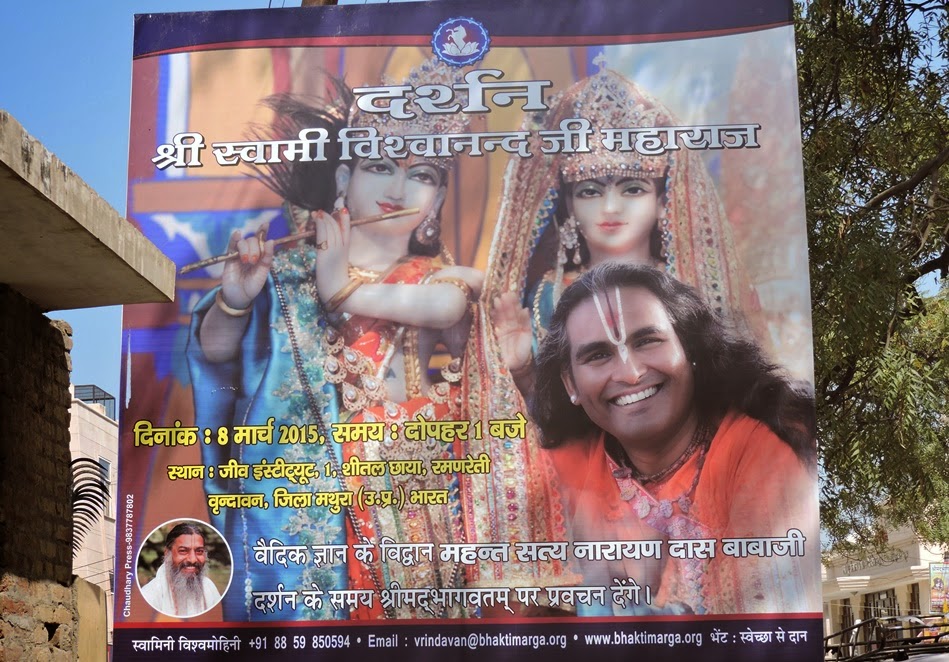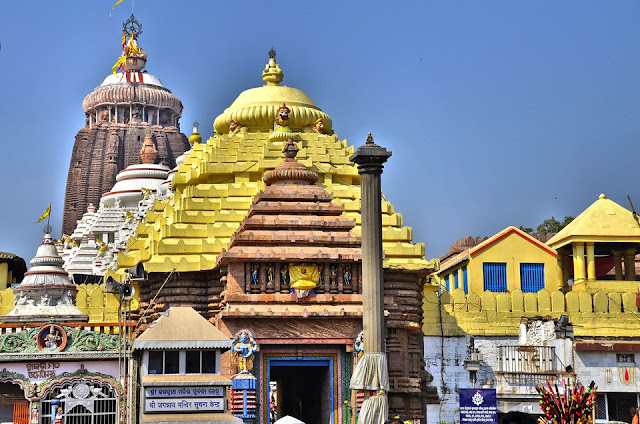Gopala-vijaya II: Beginning of Madhura-rasa section
I have been asked by some to shorten my posts--when I make them. It is tough for me and I often leave posts unpublished because I don't want to post anything that is incomplete or trite. This is why I have so many unpublished posts languishing. Sometimes I go back and just post them as they are and I will probably go and do that with my backlog one of these days, when the inspiration hits me.
Right now, the Gopāla-vijaya is presenting its own challenges. I wanted to finish the section on Dāna-līlā yesterday, but I am finding the language a bit difficult. There is a great deal of archaic vocabulary, and even though there is a good glossary in the back, there are times when neither this glossary, nor the dictionary, nor the glossary in SKK (the language of which is very similar and probably from the same region of Bengal), are helpful. There are also occasional syntax problems. On their own, these might not be too disruptive, but sometimes there is a series of verses in which incomprehension accumulates. I don't think I would be able to translate it without help from an expert.
The chapters in this edition of the Gopāla-vijaya are not numbered, so I have given them numbers based on the signature verses. Where Kavisekhara concludes a section with his own name and a statement of the glories of the Gopāla-vijaya, I have called it a chapter and given it a number.
As stated in the last post, the first 27 chapters cover pretty much the same material as the first 28 chapters of the Tenth Canto. In other words, everything that precedes the rāsa-līlā. There are some extra anecdotes, some extra descriptions, but the amount of prayers is much reduced. It is arguable that in the Bhāgavatam, the stories are just a vehicle for the philosophical sections, which are primarily found in the prayers and stavas—e.g. 10.2 (prayers of the gods to Krishna in the womb), 10.3 (Vasudeva and Devaki’s prayers to the newborn Krishna), 10.8 (Garga’s prayers), 10.10 (Nalakuvera and Manigriva), 10.14 (Brahma-stava), 10.16 (Kaliya and his wives), 10.21 (Venu-gita), 10.24 (Indra-stava, Surabhi-stava), 10.28 (Varuna’s prayers), etc. So there is really a substantial chunk of even this portion of the Tenth Canto that is philosophical or theological in nature.
All of the early Bengali reworkings of the Tenth Canto, three of which I have some knowledge, are characterized by an interest in the lilas at the expense of the philosophy. (Call it that old “skipping straight to the Tenth Canto” syndrome.) This can also be said of the Gopāla-campū—with the exception, of course, of all of Jiva Goswami's arguments in support of Krishna's return to Vrindavan and getting married to the gopis. But then, the theological strengths and subtleties of the Bhāgavatam have been made clear in Jiva Goswami’s six Sandarbhas.
So, according to this count, there are 81 chapters in GPVJ, covering principally Krishna's Vraja-lila. It ends with Krishna’s return to Vrindavan after Uddhava’s visit there to bring the gopis Krishna's message. The one SKK manuscript that has been found is incomplete and finishes with Krishna’s departure from Vrindavan. There has been some speculation about how Chandi Das may have finished his account. Neither Maladhar Basu nor Bhagavatacharya went there, remaining faithful to the Bhāgavatam version. However, traditionally, most of the lila kirtans describing the theme of Krishna's departure for Mathura (māthura) have a final song in which Krishna does return and Radha and Krishna are reunited. Since Devakinandan also finishes with a brief description of the reunion, it stands to reason that Chandi Das also did. Thus, although Jiva Goswami uses exclusively Sanskrit sources to argue his points about the great return and samṛddhimān sambhoga, the primary inspiration for his magnum opus was probably this folk tradition.
So, after the 27 preliminary chapters related to Krishna's Vrindavan-lila, Devakinandan's primary interest, the madhura-lila, i.e., corresponding to the Rasa-lila chapters, which are only five in number in the Bhāgavatam, is expanded in GPVJ to 38 chapters, i.e., the entire section from chapters 28 to 66. However, besides the Rasa-lila, these include the Dana, Nauka, Vamsi and many of the other topics dealt with in SKK. Once again, though there is much worth looking at in this stuff, I want to concentrate on the dana-lila section, which covers chapters 35 to 42, pages 148 to 175. However, to get there, I spent yesterday reading chapters 28-35. I will just try to arrange my notes on that material here.
========
The section begins with Krishna going out into the village all dressed up in his naṭavara-veśa, extensively described. He looks like millions of incarnation of Kamadeva. This is called his vijaya. He calls his friends with the flute. It sounds a bit like Gauranga's sankirtan, going from door to door to spread the Holy Name. I wonder if there could be a connection.
Chapter 29. When they hear that Krishna is out and about, the gopis decide to dress up for him, after all, who could hold back? Here, the symptoms of the early rasa--indifference to household duties, etc., are described. Since we haven't gotten to the rasa lila yet, we cannot say what happens there. There is a whole section of which the following verses are typical:
keho bale kula kari sṛjila kona vidhi
se kāraṇe hāthe hāthe hārāilo nidhi
keho bale je ha:u se ha:u parivāde
se kānura pada nā chāḍibo paramāde
keho bale e janame eho tapa kari
nupura haiyā thāki dui pāe dhari
Chapter 30 starts with an interesting verse:
sahaje svatantara goālāra nārī
ghare guru jane trina buddhi nāhi kari
Let me just say this for now: the social and historical circumstances in which the Radha and Krishna story develops are significant to me. Though the interpretation of history is a fluid matter, one thing is certain: Documents are real, even if we cannot understand them completely. There is always an unstated subtext that we have to attempt to decode. In my opinion, the conscious or unconscious subtext of all Radha and Krishna lila is the edification or apotheosis of human love.
Though I don't think Devakinandan is a Sahajiya (Vaishnava Sahajiyaism did not yet exist), he reveals the ground in which Sahajiyaism took birth. I have already mentioned that the GPVJ takes Bhāgavata elements, but plays down the theology and emphasizes the rasa.
Rasa cannot be produced without a sense of identification. The sense of identification produced by philosophical reasoning is only partially helpful. What it does in this case is give a boost to the natural appreciation of the human-like loves by investing them with a divine aura.
In the interest of shortening my posts, I will stop here and go on with this segment in a later one.

Right now, the Gopāla-vijaya is presenting its own challenges. I wanted to finish the section on Dāna-līlā yesterday, but I am finding the language a bit difficult. There is a great deal of archaic vocabulary, and even though there is a good glossary in the back, there are times when neither this glossary, nor the dictionary, nor the glossary in SKK (the language of which is very similar and probably from the same region of Bengal), are helpful. There are also occasional syntax problems. On their own, these might not be too disruptive, but sometimes there is a series of verses in which incomprehension accumulates. I don't think I would be able to translate it without help from an expert.
The chapters in this edition of the Gopāla-vijaya are not numbered, so I have given them numbers based on the signature verses. Where Kavisekhara concludes a section with his own name and a statement of the glories of the Gopāla-vijaya, I have called it a chapter and given it a number.
As stated in the last post, the first 27 chapters cover pretty much the same material as the first 28 chapters of the Tenth Canto. In other words, everything that precedes the rāsa-līlā. There are some extra anecdotes, some extra descriptions, but the amount of prayers is much reduced. It is arguable that in the Bhāgavatam, the stories are just a vehicle for the philosophical sections, which are primarily found in the prayers and stavas—e.g. 10.2 (prayers of the gods to Krishna in the womb), 10.3 (Vasudeva and Devaki’s prayers to the newborn Krishna), 10.8 (Garga’s prayers), 10.10 (Nalakuvera and Manigriva), 10.14 (Brahma-stava), 10.16 (Kaliya and his wives), 10.21 (Venu-gita), 10.24 (Indra-stava, Surabhi-stava), 10.28 (Varuna’s prayers), etc. So there is really a substantial chunk of even this portion of the Tenth Canto that is philosophical or theological in nature.
All of the early Bengali reworkings of the Tenth Canto, three of which I have some knowledge, are characterized by an interest in the lilas at the expense of the philosophy. (Call it that old “skipping straight to the Tenth Canto” syndrome.) This can also be said of the Gopāla-campū—with the exception, of course, of all of Jiva Goswami's arguments in support of Krishna's return to Vrindavan and getting married to the gopis. But then, the theological strengths and subtleties of the Bhāgavatam have been made clear in Jiva Goswami’s six Sandarbhas.
So, according to this count, there are 81 chapters in GPVJ, covering principally Krishna's Vraja-lila. It ends with Krishna’s return to Vrindavan after Uddhava’s visit there to bring the gopis Krishna's message. The one SKK manuscript that has been found is incomplete and finishes with Krishna’s departure from Vrindavan. There has been some speculation about how Chandi Das may have finished his account. Neither Maladhar Basu nor Bhagavatacharya went there, remaining faithful to the Bhāgavatam version. However, traditionally, most of the lila kirtans describing the theme of Krishna's departure for Mathura (māthura) have a final song in which Krishna does return and Radha and Krishna are reunited. Since Devakinandan also finishes with a brief description of the reunion, it stands to reason that Chandi Das also did. Thus, although Jiva Goswami uses exclusively Sanskrit sources to argue his points about the great return and samṛddhimān sambhoga, the primary inspiration for his magnum opus was probably this folk tradition.
So, after the 27 preliminary chapters related to Krishna's Vrindavan-lila, Devakinandan's primary interest, the madhura-lila, i.e., corresponding to the Rasa-lila chapters, which are only five in number in the Bhāgavatam, is expanded in GPVJ to 38 chapters, i.e., the entire section from chapters 28 to 66. However, besides the Rasa-lila, these include the Dana, Nauka, Vamsi and many of the other topics dealt with in SKK. Once again, though there is much worth looking at in this stuff, I want to concentrate on the dana-lila section, which covers chapters 35 to 42, pages 148 to 175. However, to get there, I spent yesterday reading chapters 28-35. I will just try to arrange my notes on that material here.
========
The section begins with Krishna going out into the village all dressed up in his naṭavara-veśa, extensively described. He looks like millions of incarnation of Kamadeva. This is called his vijaya. He calls his friends with the flute. It sounds a bit like Gauranga's sankirtan, going from door to door to spread the Holy Name. I wonder if there could be a connection.
Chapter 29. When they hear that Krishna is out and about, the gopis decide to dress up for him, after all, who could hold back? Here, the symptoms of the early rasa--indifference to household duties, etc., are described. Since we haven't gotten to the rasa lila yet, we cannot say what happens there. There is a whole section of which the following verses are typical:
Some gopi said, "What God created the family, for which reason I am deprived of this jewel (Krishna) who is present before me?" Another said, "Whatever people say, I don't care. I will not abandon Krishna's feet, even by mistake." Another said, "In this lifetime, I will perform austerities so that I can become his ankle bells in my next life, and remain holding his feet all the time."This style, by the way, "keho bole..." repeated, is quite typical in the literature of the time, e.g., Caitanya-bhāgavata The last verse quoted (29.34) is the kind of thing that I don't think you would see at all in Sri Kṛṣṇa-kīrtana, and can be attributed to the Bhāgavata influence.
Chapter 30 starts with an interesting verse:
The cowherd women are naturally independent and don't give a hoot for their authorities in the home. (30.2)I think this deserves a little comment. This is a statement about class. The brahmin community tried to maintain a high standard of cultural behavior based on purity. Of all purities, sexual purity was given perhaps the highest value of all. By attributing a spirit of independence to cowherd women, this both reflects the standards of the dominant community as well as a certain envy. It is a bit like the ambivalence of whites to blacks that was prevalent in America: "Whites are (of course) superior in every way, but those darkies seem to have a lot of fun dancing and having sex." A dark ambivalence.
Let me just say this for now: the social and historical circumstances in which the Radha and Krishna story develops are significant to me. Though the interpretation of history is a fluid matter, one thing is certain: Documents are real, even if we cannot understand them completely. There is always an unstated subtext that we have to attempt to decode. In my opinion, the conscious or unconscious subtext of all Radha and Krishna lila is the edification or apotheosis of human love.
Though I don't think Devakinandan is a Sahajiya (Vaishnava Sahajiyaism did not yet exist), he reveals the ground in which Sahajiyaism took birth. I have already mentioned that the GPVJ takes Bhāgavata elements, but plays down the theology and emphasizes the rasa.
Rasa cannot be produced without a sense of identification. The sense of identification produced by philosophical reasoning is only partially helpful. What it does in this case is give a boost to the natural appreciation of the human-like loves by investing them with a divine aura.
In the interest of shortening my posts, I will stop here and go on with this segment in a later one.
Gopāla-vijaya II: Beginning of Madhura-rasa section
Krishna's Purva-rāga and Divine Helplessness




Comments